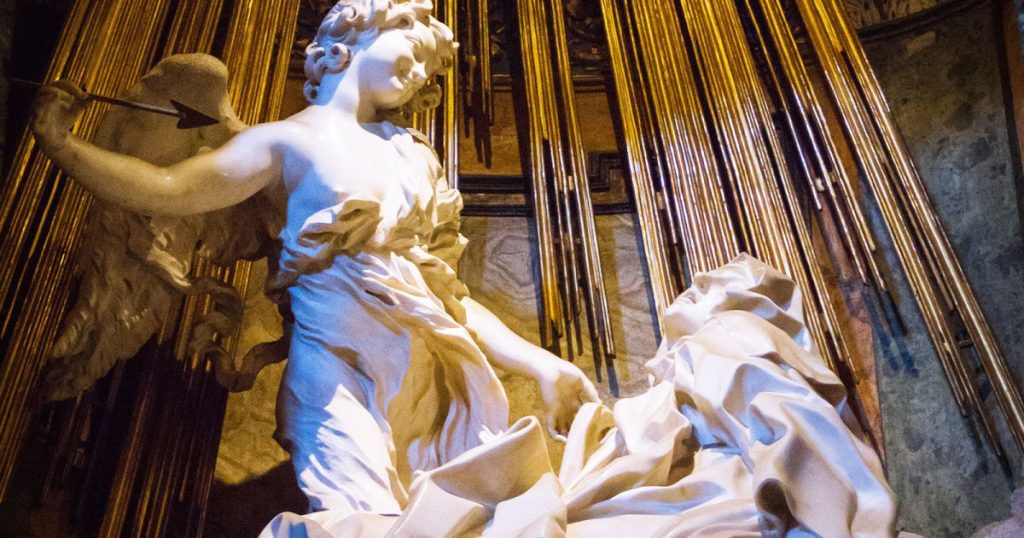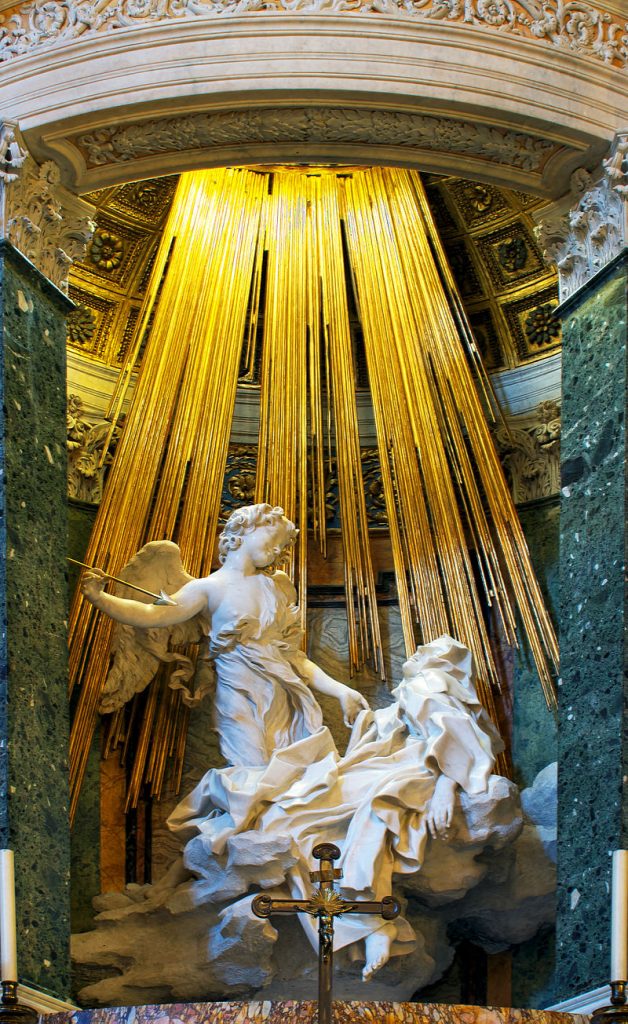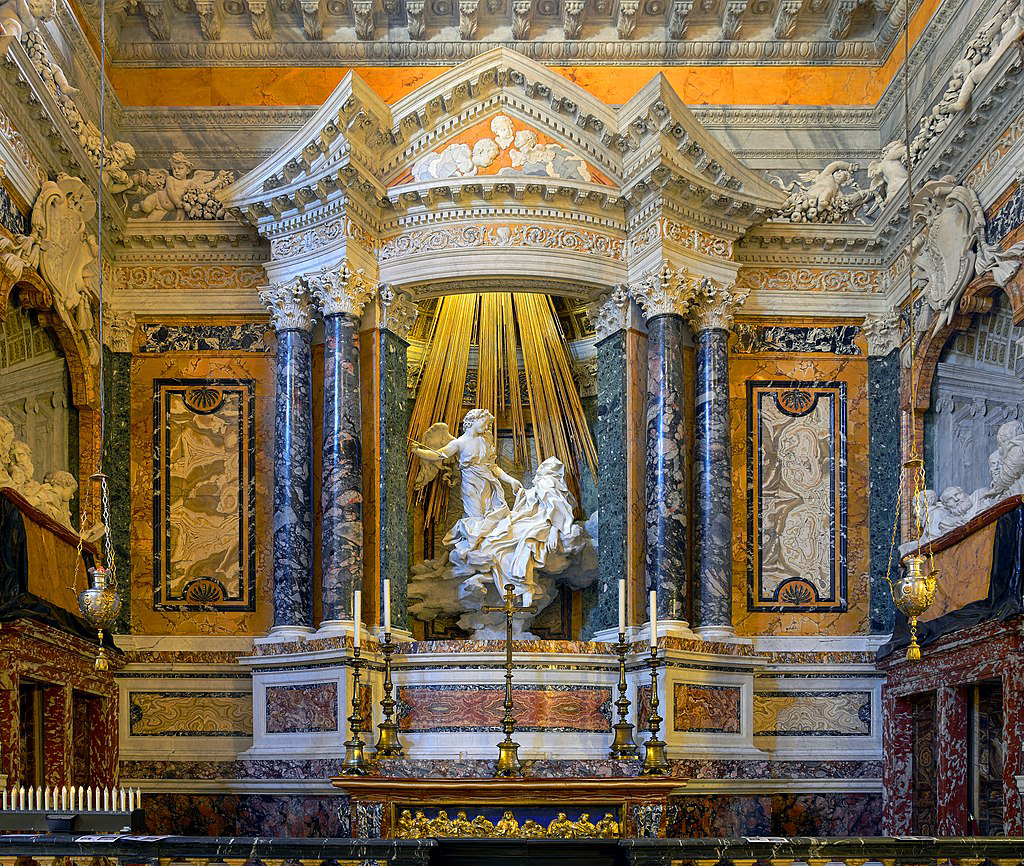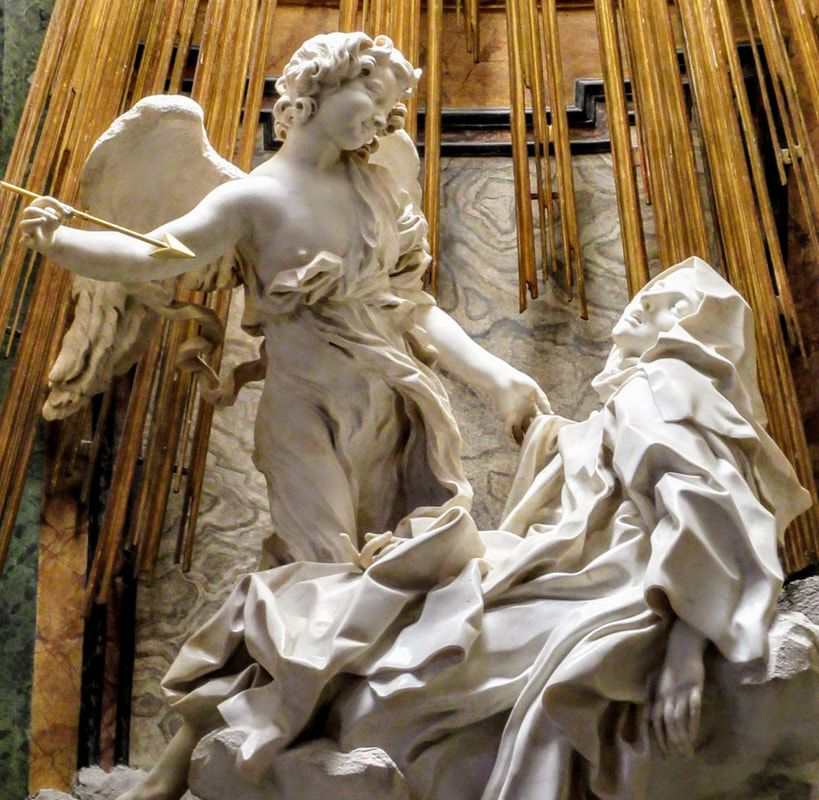Introduction of Ecstasy of Saint Teresa

Ecstasy of Saint Teresa is a masterpiece created by Italian Renaissance and Baroque sculptor Gian Lorenzo Bernini. This sculpture is located in a small church in the Church of Santa Maria della Vittoria and is one of the representative works of the High Roman Baroque style. This article will provide an in-depth introduction to the origin, historical background, artistic characteristics, and cultural significance of this sculpture during the Baroque period.
Bernini and the High Roman Baroque Style
The Birth of Baroque Art
Baroque art is a style of art in 17th century Europe that pursued emotional expression and dramatic effects. Compared to the rationality and symmetry of the Renaissance, it emphasized emotions, dynamics, and complexity. This style was widely applied in religion and court art, reflecting the social and cultural changes of that time.
Gian Lorenzo Benini
Gian Lorenzo Benini is known as one of the founders of the High Roman Baroque style. He is a versatile artist, both a sculptor and an architect, whose works are full of drama and expressiveness. Benini gave new vitality to Baroque art, and his works often fused emotional and religious themes, with strong emotional expression.
The Story of Saint Theresa

Saint Theresa Avila
The theme of ‘Saint Teresa’s Ecstasy’ is Saint Teresa of Á vila, a Spanish Carmen nun and mystic. Saint Theresa described her encounter with angels in her works, which became the inspiration for this sculpture.
Angel’s Spear
The Ecstasy of Saint Teresa depicts Saint Theresa immersed in a mysterious experience, her expression expressing extreme joy, as if experiencing a supernatural ecstasy. The image of an angel is holding a golden spear, preparing to pierce Saint Theresa’s heart. This scene suggests that Saint Theresa is receiving God’s mysterious revelation, an experience often described as a ‘wedding of the soul’.
The fusion of art and religion of Ecstasy of Saint Teresa
Anti religious reform
The Baroque period was closely linked to the Counter Reformation movement, which was a series of measures taken by the Catholic Church to resist the spread of Protestantism in 17th century Europe. In this context, religious art plays an important role in strengthening the teachings and religious beliefs of the church.
Emphasize religious drama
Benini’s works embody the dramatic characteristics of religion, as he excels in transforming religious scenes into vivid dramas that evoke emotional resonance among the audience. The Ecstasy of Saint Theresa is an outstanding example of this characteristic, as it conveys the profound emotions of religious faith by expressing Saint Theresa’s mysterious experience.

Expression of religious emotions
The uniqueness of this sculpture lies in the religious emotions it expresses. Saint Theresa’s expression and posture indicate that she is experiencing a supernatural joy, which is different from the solemnity and piety commonly seen in traditional religious art. This emotional expression has sparked the audience’s contemplation of faith and mysticism.
The Form and Content of Art
The Combination of Sculpture and Architecture
Benini is not only an outstanding sculptor, but also an outstanding architect. When creating ‘The Ecstasy of Saint Theresa’, he not only carved this sculpture, but also designed the decoration of the entire chapel. This close combination integrates sculpture with its environment, creating a unique artistic experience.
Exquisite scenery
The decoration of the chapel includes various elements such as marble, plaster, and painting, which complement the sculpture and form a comprehensive artwork. This meticulous setting enhances the theatricality of the sculpture, making the audience feel the authenticity and intensity of religious scenes.
Magnificent influence and Baroque heritage

The enduring influence of art
The Madness of Saint Theresa represents the essence of Baroque art, and its emotional expression and dramatic effects have had a profound impact on later art. Benini’s works laid a solid foundation for the development of Baroque art and influenced several generations of artists.
Epilogue of Ecstasy of Saint Teresa
The Ecstasy of Saint Teresa is a masterpiece by Gian Lorenzo Benini, representing one of the pinnacles of Baroque art. This sculpture showcases Benini’s artistic talent through dramatic emotional expression and profound exploration of religious themes. At the same time, it is also a representative of religious art during the Baroque period, reflecting the historical background of religious reform and cultural change at that time. The influence of this masterpiece continues to this day, inspiring people to think about faith, art, and human emotions.

